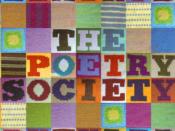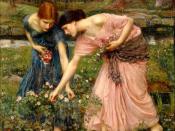Carpe Diem, the Latin phrase meaning "Seize the day" is universal for a basis to live life to the fullest. But it can also be misinterpreted and manipulated, which is seen the 17th century Carpe Diem poetry. People began shifting away form the dirty overcrowded city life and moved to the peaceful countryside. In parallel, the poetry also shifted form the old, bland, romantic poetry, to poetry of Robert Herrick, Marlowe and Marvell, which entices young girls to do things like move to the countryside and live life like there is no tomorrow. Most of all the poets were using the theme of Carpe diem to persuade young girls to forget they traditional morals and sleep with them before they get to old to have fun.
Perhaps the most popular Carpe Diem poem was Herrick's "To Virgins, to make much Of Time". The first two lines read, "Gather ye rosebuds while ye may, Old time is still a-flying."
Herrick is clever because he uses rose buds as a symbol. Rosebuds are beautiful and smell nice but they do not live for long and the wither and die. He reenforces this idea with the next two lines that read, "..And the same flower that smiles today/ Tomorrow will be dying." He also uses a metaphor of the sun, "The glorious lamp of heaven, the sun, The higher he's a getting, The sooner will his race be run and nearer he is to setting..," to show that like a day, life is not as long as we all think and the time that the sun will be out (the prime of the women's sexuality) only a limited amount of time. The last four lines of the poem read, "Then not be coy, but use your time, And while ye may,


